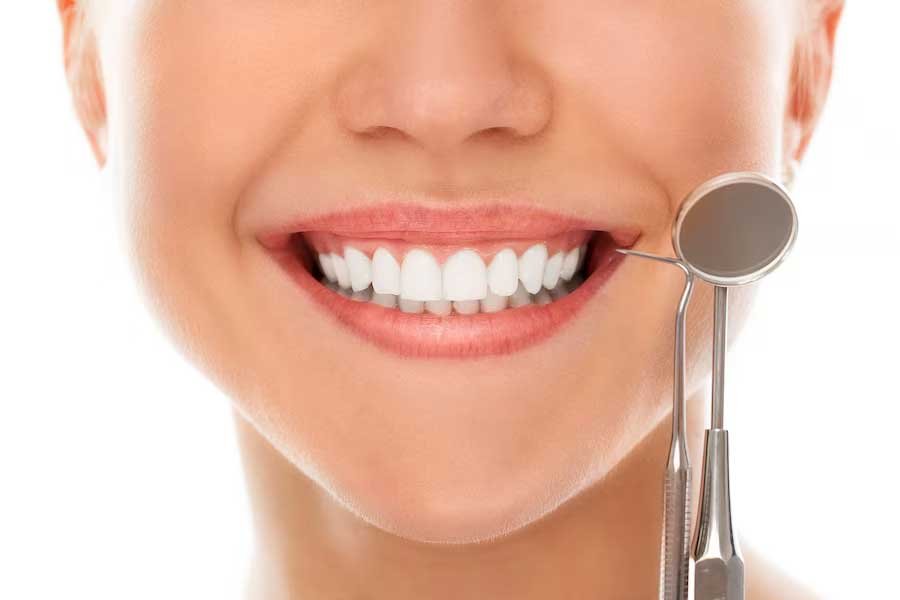Are you considering orthodontic treatment to achieve a more beautiful smile? While traditional metal braces have been a go-to solution for many years, there’s now a convenient alternative gaining popularity: clear braces.
Whether you are seeking ways to improve your smile or a teenager, this guide will provide you with information that you need to know about clear braces.
Clear braces, also known as ceramic braces, invisible braces, or clear aligners, are an orthodontic option that offers a more aesthetically pleasing alternative to traditional metal braces. They are designed to straighten teeth while minimizing the noticeable appearance of braces.
Today we will explore the various types of clear braces available, the factors that affect their cost and everything in between. By the end, you will have a clear understanding of whether clear braces are the right choice for you.
How Do Invisible Braces Work?
Clear fixed braces, also known as ceramic braces, work similarly to traditional metal braces but with a more discreet appearance. They consist of brackets and wires attached to the teeth. They work together to gradually move the teeth into their desired positions.
Below is a step-by-step summary of how clear fixed braces works:
- Consultation and Planning: The orthodontist will examine your teeth, take X-rays, and create a personalized treatment plan based on your specific dental needs. This plan will outline the target alignment of your teeth and the estimated duration of treatment.
- Bracket Placement: Clear brackets made of ceramic material are carefully bonded to the front surfaces of your teeth using dental adhesive. These brackets serve as anchors for the archwire.
- Archwire Attachment: An archwire, usually made of metal, is threaded through the brackets. The wire connects the brackets and provides the necessary force to guide your teeth into their correct positions over time.
- Teeth Movement: As the archwire exerts pressure, it encourages the teeth to shift and align according to the treatment plan. The orthodontist may also use additional tools, such as springs or rubber bands, to address specific tooth movements or correct bite issues.
- Completion and Retention: Once your teeth have achieved their desired positions, the active phase of treatment concludes. To prevent the teeth from shifting back to their original positions, you will be provided with a retainer, which can be removable or fixed, to wear for a specified duration.
Types of Clear Braces
When it comes to invisible braces London, there are a few different types available. Let’s explore the most common options:
- Ceramic Braces: Ceramic braces are a type of clear braces that use brackets made of tooth-coloured or clear ceramic material. These brackets blend in with the natural colour of your teeth, making them less noticeable compared to traditional metal braces. The wires used in ceramic braces are usually made of metal but can be tooth-coloured as well. Ceramic braces are known for their aesthetic appeal. This is why they are a popular choice for those seeking a more discreet orthodontic treatment option.
- Clear Aligners: Clear aligners, such as Invisalign®, are a popular type of clear braces that use a series of custom-made, transparent plastic trays to gradually move the teeth into alignment. Each aligner is worn for a specified period, usually around two weeks, before being replaced with the next in the series. Clear aligners are virtually invisible and can be easily removed for eating, brushing, and flossing, offering convenience and flexibility during treatment. They are particularly popular among adults and teenagers who desire a discreet orthodontic option.
- Lingual Braces: Lingual braces are placed on the back surface of the teeth. Thus, they remain completely hidden from view. These braces use brackets and wires similar to traditional braces, but they are custom-made to fit the contours of the back of your teeth. Lingual braces provide an excellent option for individuals who prefer a completely hidden orthodontic treatment.
- Sapphire Braces: Sapphire braces are another type of clear braces that use brackets made of high-quality, transparent sapphire crystal. These brackets are designed to blend in with the natural colour of your teeth, making them less noticeable. Sapphire braces offer excellent aesthetics and are known for their durability and resistance to staining. They are a popular choice for individuals seeking clear braces that are both effective and visually appealing.
Cost of Invisible braces
The cost of Invisible braces in London can vary. Factors such as the type of clear braces used, the complexity of your orthodontic case, the duration of treatment, your location, and the orthodontist fee come to play.
Clear braces can cost between €3,400 and €6,800 or more. Invisalign aligners range from €2,500 to €6,800 or more. The cost of clear aligners depends on the complexity and duration of treatment.
Schedule your clear braces consultation today at Bayswater Dental Clinic in Paddington. If you are looking to achieve a confident smile, call us to book your appointment now.
Author Bio
Lauren Nelson, is a well know orthodontic writer with a passion for transforming smiles and improving oral health with natural tips. With a comprehensive background in dentistry blogging and a specialty in writing, Lauren Nelson has spent years achieving smiles for patients of all ages. Her expertise helps you to know the cost of Invisible braces in London at Bayswater Dental Clinic.















Leave a Reply